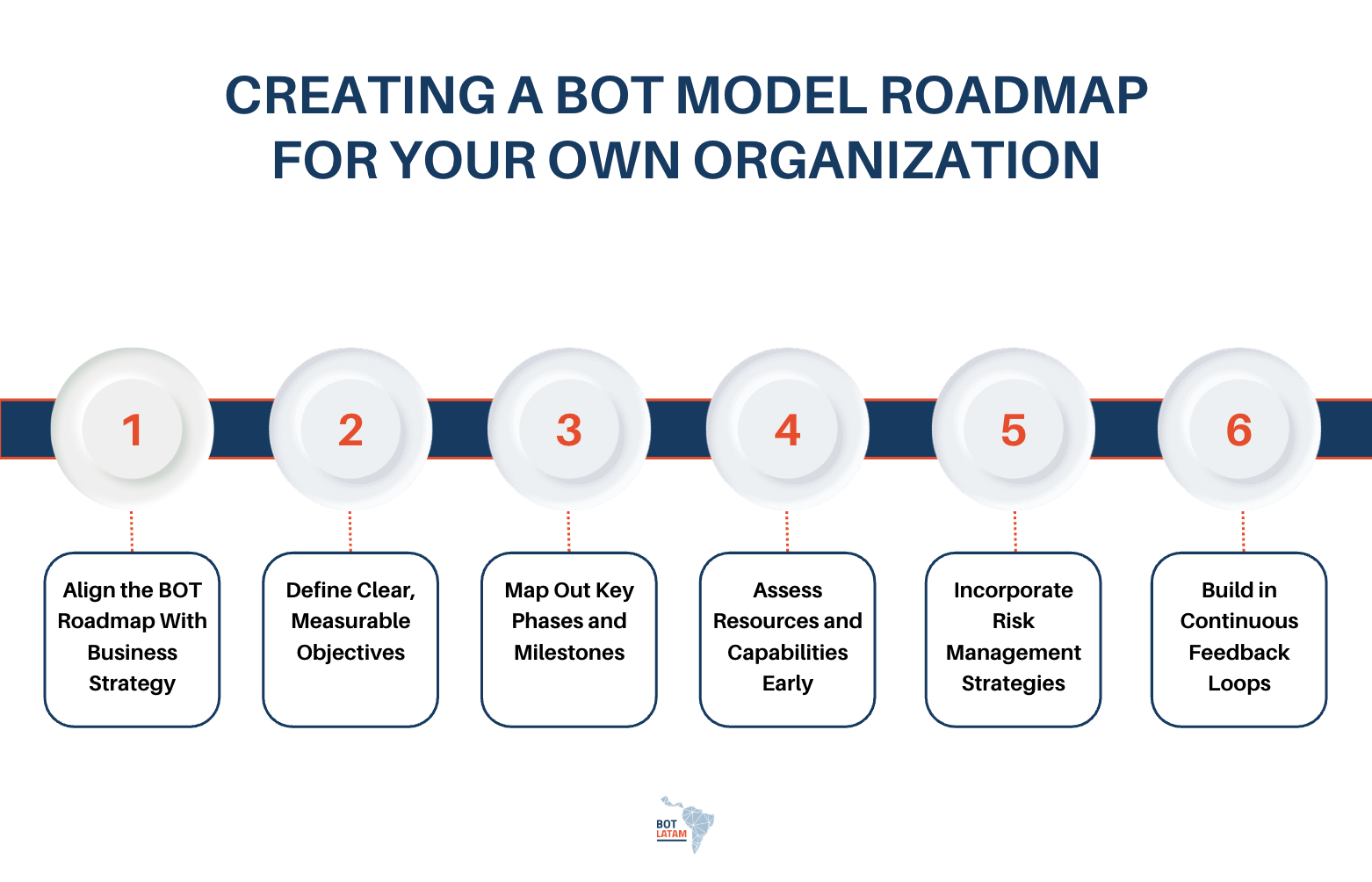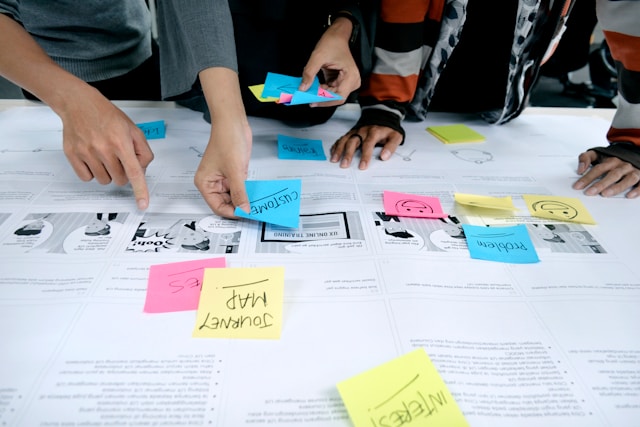Expanding operations into new markets can be complex, costly, and risky. The Build-Operate-Transfer (BOT) model offers a way to scale quickly while keeping long-term control in your hands. It’s a structured approach where a partner builds the team and infrastructure, operates it efficiently, and then hands it over to you fully functional.
Global research by Deloitte shows that 70% of organizations plan to increase outsourcing or partnership models like BOT in the next two years, driven by the need for speed, specialized talent, and reduced overhead. For many, BOT is more than a cost-saving measure; it’s a growth strategy.
This article breaks down the BOT model roadmap, covering the entire BOT operations development process from feasibility studies to the final transfer. You’ll see how to align BOT with your business strategy, manage risks, leverage local talent, and future-proof your operations. Whether you’re eyeing a new market in Latin America or exploring global expansion, the insights here will help you design a sustainable development operations plan that works.
Why Businesses Choose BOT for Long-Term Development Operations
The Build-Operate-Transfer model has moved far beyond a quick market-entry tactic. For many organizations, it’s a deliberate strategy to establish sustainable development operations without the trial-and-error costs of building everything from scratch. The appeal lies in its ability to combine speed, operational stability, and future ownership.
Reduced Risk in Unfamiliar Markets.
When entering new geographies, the BOT structure shields you from high initial risk. Your partner handles setup, compliance, and hiring, so you can validate market potential before fully committing. According to KPMG’s Global Outsourcing Survey, 65% of executives say reduced operational risk is the primary reason for using structured partnership models like BOT.
Accelerated Talent Acquisition.
Finding skilled teams in competitive markets can take months. BOT partners already have established recruitment pipelines and local expertise, allowing you to tap into talent pools faster. This speed is critical when you need to meet product deadlines or scale operations without bottlenecks.
Clear Path to Ownership.
Unlike traditional outsourcing, BOT comes with a built-in exit plan. The operation is designed from day one to be transferred to your ownership, with systems, teams, and processes already in place. This avoids the disruption that often happens when switching from a vendor to in-house management.
Operational Efficiency From Day One.
By leveraging an experienced partner during the operate phase, you benefit from mature processes and optimized workflows. A 2023 Deloitte report found that organizations using structured operational models saw up to 30% faster process maturity compared to in-house-only setups. That early efficiency compounds over time, especially when scaling.
Strategic Alignment for Long-Term Growth.
BOT arrangements aren’t just about short-term delivery, they’re about building a foundation that fits your growth plan. From the tech stack to reporting structures, everything is tailored so you can seamlessly integrate the operation into your long-term development strategy once the transfer happens.
BOT Operations Development Process Explained
The BOT operations development process breaks down into distinct phases, each designed to build a scalable, efficient operation ready for eventual transfer. Understanding these phases helps you set realistic expectations and track progress effectively.
1. Feasibility and Planning Phase.
Before any build starts, a thorough feasibility study is essential. This includes market analysis, regulatory review, and resource mapping. You want to verify that the target location aligns with your strategic goals and has the talent and infrastructure needed. A report from PwC shows that companies investing time in detailed upfront planning reduce project overruns by 25%. This phase also defines the scope, timeline, and success criteria for the BOT engagement.
2. Build Phase: Establishing the Foundation.
During this phase, the partner builds the operational infrastructure, recruiting teams, setting up offices, and implementing processes and technologies. The emphasis is on creating a robust, compliant environment that reflects your company’s standards. Strong project management is key here to avoid scope creep and ensure milestones are met on time.
3. Operate Phase: Optimizing Performance.
Once operational, the focus shifts to managing day-to-day functions, refining workflows, and embedding quality assurance. The goal is steady-state performance that can run independently while delivering expected business outcomes. Data-driven management plays a big role here, tracking KPIs such as productivity, quality, and employee retention guide continuous improvement.
4. Transfer Phase: Seamless Handover.
The final phase involves transferring full ownership to you. This includes knowledge transfer, documentation handoff, and leadership transition. The partner supports you until your internal team fully controls operations. A study by McKinsey highlights that well-executed transfer phases reduce operational disruption by up to 40% compared to rushed handovers.
Creating a BOT Model Roadmap for Your Own Organization

Building your BOT model roadmap requires a clear framework that aligns with your business objectives and operational realities. This isn’t a one-size-fits-all approach, it demands tailored planning to ensure every stage drives toward sustainable growth and efficiency.
Align the BOT Roadmap With Business Strategy:
Your roadmap should start with a thorough understanding of how the BOT model supports your broader goals. Whether it’s entering new markets, accessing specialized skills, or reducing time to scale, every milestone must link back to these priorities. According to Bain & Company, companies that align operational roadmaps with strategy improve project success rates by over 30%.
Define Clear, Measurable Objectives:
Set specific KPIs that reflect both short-term milestones and long-term targets. These might include recruitment benchmarks, operational cost targets, or quality metrics. Clear objectives keep all stakeholders accountable and focused on outcomes rather than activities.
Map Out Key Phases and Milestones:
Break the BOT process into manageable segments: feasibility, build, operate, and transfer. For each phase, establish timelines and critical deliverables. Use Gantt charts or project management tools to visualize progress and dependencies. This helps prevent delays and keeps the project on track.
Assess Resources and Capabilities Early:
Identify the internal and external resources required at every stage. This includes budget, technology, and human capital. A realistic resource assessment can prevent scope creep and uncover gaps before they become costly problems.
Incorporate Risk Management Strategies:
Plan for potential challenges like regulatory changes, talent shortages, or communication breakdowns. Develop contingency plans and build flexibility into your roadmap. The World Economic Forum notes that organizations with proactive risk management see 50% fewer operational disruptions.
Build in Continuous Feedback Loops:
Include regular review points to evaluate progress and adjust plans as needed. BOT projects often evolve, and agility in your roadmap ensures you can adapt without losing momentum. Regular communication across all involved teams strengthens alignment and transparency.
Mistakes To Avoid When Developing BOT Operations
Developing BOT operations demands precision and foresight. Avoiding common pitfalls can save you time, money, and frustration throughout the entire process.
1. Neglecting Detailed Planning and Due Diligence:
Jumping into BOT without a comprehensive feasibility study is a frequent error. Skipping this step can lead to unexpected regulatory hurdles, talent shortages, or infrastructure challenges. Research from Gartner indicates that 40% of outsourced projects fail due to inadequate upfront planning. You need a clear understanding of local conditions, risks, and requirements before committing resources.
2. Underestimating Cultural and Communication Differences:
Failing to address cultural nuances between your organization and the local team can disrupt collaboration. Misaligned expectations often cause friction and slow progress. Clear communication protocols and cultural training are essential to build trust and ensure smooth operations.
3. Setting Vague or Unrealistic KPIs:
Without measurable and achievable KPIs, monitoring performance becomes guesswork. Vague goals make it difficult to hold partners accountable or identify improvement areas. Make sure your KPIs are specific, time-bound, and tied to your strategic objectives.
4. Overlooking Knowledge Transfer Planning:
The transfer phase is critical but often rushed or poorly executed. Lack of detailed documentation and insufficient training can result in operational gaps once ownership shifts. According to McKinsey, 70% of transitions falter due to inadequate knowledge transfer. Prioritize structured handover plans to avoid disruptions.
5. Ignoring Continuous Improvement:
BOT is not a set-and-forget model. Failing to implement feedback loops and ongoing process refinement limits the operation’s growth and efficiency. Regular reviews and adaptability keep your BOT operations competitive and aligned with evolving business needs.
6. Poor Risk Management and Contingency Planning:
Unexpected issues will arise. Not preparing for these risks exposes your operation to delays and cost overruns. Incorporate contingency strategies early, covering legal, financial, and operational scenarios.
Ready to Unlock Sustainable Development Operations?
Successfully implementing a BOT model roadmap requires strategic planning, rigorous execution, and ongoing adaptability to unlock sustainable development operations. Organizations that embrace this approach can reduce operational risks by up to 40% and accelerate market entry while maintaining long-term control.
At BOT LATAM, we combine deep regional expertise with proven methodologies to guide businesses through every phase of the BOT development process. Our data-driven strategies and local insights ensure seamless transitions and operational excellence, empowering you to scale efficiently with confidence. Partnering with us means tapping into a trusted framework built on transparency, accountability, and measurable outcomes tailored to your unique goals. Make sure to contact us to learn more about our services!

Revolutionize Your Workflow with Our Innovative BOT Strategy!
Enhance your operations seamlessly and adapt to market demands
Contact Us



%2017.26.38.png)
